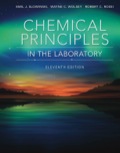
In a reaction involving the iodination of acetone, the following volumes were used to make up the reaction mixture:
a. How many moles of acetone were in the reaction mixture? Recall that, for a component A, moles
__________ moles acetone
b. What was the molarity of acetone in the reaction mixture? The volume of the mixture was 50 mL, 0.050 L, and the number of moles of acetone was found in Part (a). Again,
__________ M acetone
c. How could you double the molarity of the acetone in the reaction mixture, keeping the total volume at 50 mL and keeping the same concentrations of
(a)
Interpretation:
The reaction of iodination of acetone, forms a reaction mixture;
The moles of acetone are present in the reaction mixture should be determined.
Concept Introduction:
Mole is the amount of the substance that contains the same number of particles or atoms or molecules. Molar mass is defined as an average mass of atoms present in the chemical formula. It is the sum of the atomic masses of all the atoms present in the chemical formula of any compound.
Answer to Problem 1ASA
Moles of acetone = 0.02 mol
Explanation of Solution
Given information:
Molarity of acetone = 4 M
Molarity of HCl = 1M
Molarity of I2 = 0.0050 M
Volume of acetone = 5 mL
Volume of HCl = 10 mL
Volume of I2 = 10 mL
Volume of H2O = 25 mL
The calculation of moles of acetone is shown below:
(b)
Interpretation:
The reaction of iodination of acetone, forms a reaction mixture;
The molarity of acetone in the reaction mixture should be determined when volume of mixture is 50 mL
Concept Introduction:
Mole is the amount of the substance that contains the same number of particles or atoms or molecules. Molar mass is defined as an average mass of atoms present in the chemical formula. It is the sum of the atomic masses of all the atoms present in the chemical formula of any compound.
The ratio of moles to the volume in liters is known as molarity.
Answer to Problem 1ASA
Molarity of acetone = 0.4 M
Explanation of Solution
Given information:
Molarity of acetone = 4 M
Molarity of HCl = 1M
Molarity of I2 = 0.0050 M
Volume of acetone = 5 mL
Volume of HCl = 10 mL
Volume of I2 = 10 mL
Volume of H2O = 25 mL
The calculation of molarity of acetone is shown below:
(c)
Interpretation:
The reaction of iodination of acetone, forms a reaction mixture;
Keeping the total volume and concentration of H+ and I2 remains same; predict how the molarity of aceteone should be doubled.
Concept Introduction:
Mole is the amount of the substance that contains the same number of particles or atoms or molecules. Molar mass is defined as an average mass of atoms present in the chemical formula. It is the sum of the atomic masses of all the atoms present in the chemical formula of any compound.
Answer to Problem 1ASA
Explanation of Solution
If concentration of H+ and I2 remains the same then decreases the volume of H2O by 15 mL and increases the initial concentration of acetone with volume by 15 mL.
Want to see more full solutions like this?
Chapter 20 Solutions
EBK CHEMICAL PRINCIPLES IN THE LABORATO
- Which one? Ca2^- Na2^+ Si2^+ Mg2^- AI2^-arrow_forwardIn general, which is more polar, the stationary phase or the mobile phase? The stationary phase is always more polar The mobile phase is always more polar It depends on our choices for both stationary and mobile phase Their polarity doesn't really matter so we never consider itarrow_forwardPlease helparrow_forward
- Draw the mechanism of aspirin synthesis in an basic medium and in a neutral medium, showing the attacks and the process for the formation of the product.arrow_forwardNa :S f. F NO2arrow_forwardQ1: For each molecule, assign each stereocenter as R or S. Circle the meso compounds. Label each compound as chiral or achiral. + CI OH woཡི།༠w Br H مه D CI ပ။ Br H, Br Br H₂N OMe R IN Ill N S H CI Br CI CI D OH H 1/111arrow_forward
 Chemistry: The Molecular ScienceChemistryISBN:9781285199047Author:John W. Moore, Conrad L. StanitskiPublisher:Cengage Learning
Chemistry: The Molecular ScienceChemistryISBN:9781285199047Author:John W. Moore, Conrad L. StanitskiPublisher:Cengage Learning Chemistry: Principles and PracticeChemistryISBN:9780534420123Author:Daniel L. Reger, Scott R. Goode, David W. Ball, Edward MercerPublisher:Cengage Learning
Chemistry: Principles and PracticeChemistryISBN:9780534420123Author:Daniel L. Reger, Scott R. Goode, David W. Ball, Edward MercerPublisher:Cengage Learning Chemistry & Chemical ReactivityChemistryISBN:9781337399074Author:John C. Kotz, Paul M. Treichel, John Townsend, David TreichelPublisher:Cengage Learning
Chemistry & Chemical ReactivityChemistryISBN:9781337399074Author:John C. Kotz, Paul M. Treichel, John Townsend, David TreichelPublisher:Cengage Learning Chemistry & Chemical ReactivityChemistryISBN:9781133949640Author:John C. Kotz, Paul M. Treichel, John Townsend, David TreichelPublisher:Cengage Learning
Chemistry & Chemical ReactivityChemistryISBN:9781133949640Author:John C. Kotz, Paul M. Treichel, John Townsend, David TreichelPublisher:Cengage Learning



